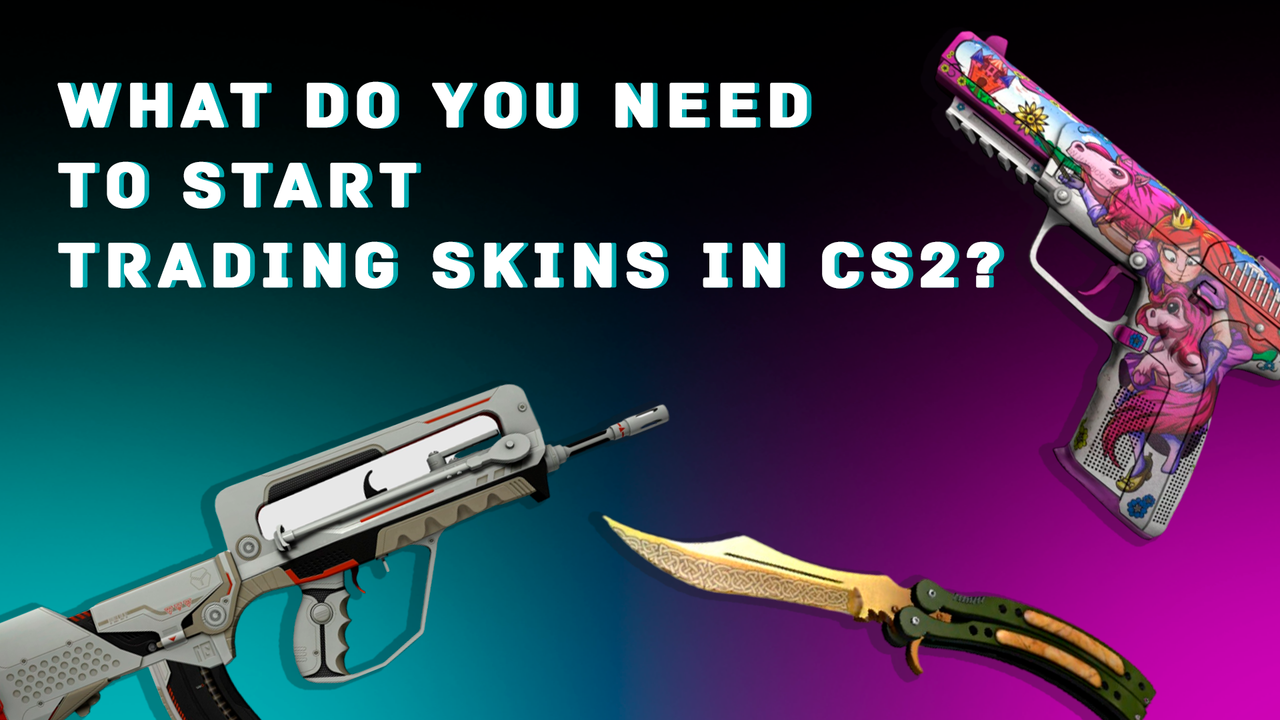Bully Tee Blog
Your go-to source for everything related to bullies and tee culture.
Cash for Pixels: The Unexpected World of CS2 Skin Trades
Discover the bizarre and thrilling world of CS2 skin trades! Uncover how pixels turn into cash in this unexpected gaming phenomenon.
Understanding CS2 Skin Trading: A Beginner's Guide
Understanding CS2 skin trading is essential for anyone looking to enhance their gaming experience and profit from their in-game items. This practice involves buying, selling, or exchanging weapon skins and other cosmetic items from the popular game Counter-Strike 2 (CS2). As a beginner, it's crucial to familiarize yourself with the various platforms available for trading, such as Steam Community Market, third-party websites, and forums. By knowing the pros and cons of each platform, you can make informed decisions and avoid common pitfalls in skin trading.
To get started with CS2 skin trading, follow these simple steps:
- Research the market: Spend some time learning about the most sought-after skins and their prices.
- Set up your Steam account: Ensure your account is secure and has the necessary trade features enabled.
- Join trading communities: Engaging with other traders can provide valuable insights and opportunities.
- Be patient: Successful trading often requires time and careful consideration of each transaction.
By following these guidelines, you'll be well on your way to mastering the dynamic world of CS2 skin trading.

Counter-Strike is a popular tactical first-person shooter game series that emphasizes teamwork, strategy, and skill. Players can enhance their gameplay experience with custom settings, such as cs2 buy binds, which allow for quicker access to weapons and utilities during matches. The competitive nature of the game has led to a thriving esports scene, captivating millions of players and fans worldwide.
The Economics of CS2 Skins: How Trades Impact Value
The economics of CS2 skins is a fascinating topic that combines elements of supply and demand, market psychology, and player behavior. In the world of Counter-Strike 2 (CS2), skins serve not just as cosmetic enhancements but also as virtual commodities with intrinsic value that fluctuates based on various factors. The trade economy is primarily driven by the scarcity of certain skins, their design, and their overall desirability within the community. For example, limited edition skins or those associated with tournament play often command higher prices due to their rarity. As players engage in trades, the marketplace adjusts, reflecting the continuous ebb and flow of demand.
Furthermore, the impact of trades on value cannot be understated. When a high-value skin changes hands, it often inflates the perceived worth of similar items, leading to a ripple effect throughout the market. Players and collectors frequently monitor recent trades to gauge the worth of their own CS2 skins, affecting their buying and selling strategies. This dynamic environment showcases the blend of economic principles and the gaming community’s culture, where engagement and social interaction significantly influence the marketplace. As the CS2 community continues to grow, understanding these economic factors becomes essential for players looking to navigate and capitalize on the evolving landscape.
What Makes a CS2 Skin Valuable? Factors to Consider in Trades
When evaluating what makes a CS2 skin valuable, several key factors come into play. Firstly, rarity is a significant determinant; skins that are harder to obtain tend to fetch higher market prices. The float value of a skin, which indicates its wear and tear, also plays a crucial role. Generally, skins in Factory New condition are much more sought after than those in Battle-Scarred condition. Additionally, the design and aesthetics of the skin can greatly influence its desirability. Unique and visually appealing skins often maintain a higher value as they cater to personal preferences within the player community.
Another critical factor to consider in trades is the demand for a specific skin. Skins that feature popular designs or are associated with professional players can experience spikes in value due to increased interest. Furthermore, market trends can fluctuate based on updates, events, or seasonal promotions, which can impact the trading landscape. Engaging in community discussions and monitoring trading platforms can provide insights into market dynamics. Ultimately, understanding these factors will not only help you make informed decisions but also enhance your strategies in the CS2 skin trading arena.